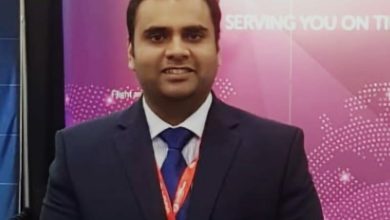How Do Businesses Effectively Cut Costs Without Compromising the Quality?

In the quest for fiscal prudence, we’ve gathered insights from CEOs and Founders on how to trim expenses without sacrificing the essence of your offerings. From transitioning to remote work to switching to a bulk-purchasing model for materials, explore the diverse strategies in these eighteen responses that have successfully balanced cost-cutting with maintaining quality.
- Transitioned to Remote Work Successfully
- Leveraged Freelance Talent and an In-House Team
- Developed Proprietary AI Model for Efficiency
- Optimized Workforce with AI and Automation
- Strategic Sourcing and Customization for Savings
- Bulk Purchasing and Inventory Management
- Leveraged Modern Technology for Marketing
- Introduced Flexible Payment Plans for Savings
- Efficient Client-Reporting with Automated Tools
- Outsourced Non-Legal Tasks to Cut Costs
- Optimized Operations and Implemented Lean Practices
- Streamlined Supply Chain and Embraced Technology
- Invested in Electric-Powered School Buses
- Simplified Admin Duties with AI Tools
- Negotiated Better Vendor Pricing and Terms
- Consolidated Marketing Tools for Cost Efficiency
- Outsourced Peripheral Jobs to Maintain Quality
- Switched to Bulk-Purchasing Model for Materials
Transitioned to Remote Work Successfully
As a small agency owner, the most successful strategy that I used to save costs without compromising quality was transitioning to a 100% remote work environment. The switch happened at the peak of the COVID-19 pandemic when it suddenly became more acceptable to work from home. Eliminating the expenses related to physical office space, such as rent, utilities, and subsidies for commuting, helps in bringing down the monthly expenses significantly.
I made investments in robust, cloud-based collaboration tools and set strict communication protocols to maintain our high-quality services.
We invested fully in these platforms, allowing constant daily communication through Slack and project management in Trello, which made every team member productive and connected somehow. Regular Zoom meetings and check-ins replaced face-to-face interactions, maintaining team bonding and project delivery.
This change has lessened the cost not only for my company but also increased satisfaction among my employees since they could work in the comfort of their homes. These results indicate that, with the right tools and great cultural management practices, remote work can be even more effective than working at a traditional office.
Pius Boachie, CEO, DigitiMatic
Leveraged Freelance Talent and an In-House Team
Our worldwide network of meticulously vetted freelance writers, editors, and subject-matter experts has expanded exponentially over the past few years. This virtual talent cloud empowers us to dynamically scale capacity up or down based on fluctuating client needs and project pipelines. No more carrying excess overhead during cyclical downswings.
At the same time, we’ve doubled down on investing in an elite cadre of full-time employees receiving competitive salaries and benefits packages. This loyal in-house cohort owns our quality control frameworks, client relationships, and cultural anchors.
We reap the cost-effectiveness and staffing flexibility of a sprawling contractor base paired with the consistency and accountability of a dedicated internal team. Our freelance talent gets tapped for dynamic execution, while our full-timers own the strategic, client-facing workstreams.
Jason Smit, CEO, Contentellect
Developed Proprietary AI Model for Efficiency
We were able to cut 36% of our annual costs the year that we developed our own AI model and stopped using various paid ML and AI tools and services.
We are a social listening SaaS firm, so we’ve been monitoring different sources of information online for over a decade to help other companies with their recognition and branding. In the very beginning, we were doing all this manually. Of course, as AI stepped into the game, we started automating some of our work with accessible paid tools, which used AI and ML for data analysis.
It was a good update, which allowed most of our workers to save a lot of their daily time, especially the time that used to be spent on very boring and repetitive tasks.
After almost 3 years of constant updating of different tools, we reached a conclusion that it didn’t make sense for us to continue down this path. We decided to invest in a team of incredibly smart young talent that developed our own AI model. It was an investment that started paying off very quickly after the implementation. We cut all tool costs, but the most important part of the change was something completely different.
When we created our own AI model, we could choose exactly what features we needed it to have; we were able to automate all tasks that needed to be automated. We had to go through a reorganization on every single level of our company. The best part being, it made us so much more efficient, productive, and creative.
Finally, instead of wasting time on repetitive tasks, each worker was able to focus on creative solutions and analyze what could be improved. Our service has also improved. Our tool is more personalized than ever, and we were the first company in our industry to have their own AI. Thanks to this, we have had a major breakthrough and have overtaken most, if not all, of our competition.
Not because of AI, but because of how personalized AI results are, how fast they are updated, and how much data our clients can have analyzed for them. Each customer gets a personalized service, which has improved the quality of it and has made us more recognized and appreciated in the market.
Within a year of this transformation, we were able to open ourselves to another 100 countries worldwide. This wouldn’t have happened if our customers weren’t happy.
Mike Sadowski, Founder and CEO, Brand24
Optimized Workforce with AI and Automation
One area where we’ve successfully cut costs at Ditto Transcripts without sacrificing quality is through optimizing our workforce model. Instead of relying solely on in-house transcriptionists, we’ve built a hybrid system that intelligently blends human expertise with advanced AI and automation.
Let me give you a specific example—a few years back, we took on a massive multi-year project transcribing thousands of hours of financial investor calls and meetings. The client’s budget was tight, but their standards for accuracy were extremely high given the sensitive nature of the content.
Our traditional approach would have been to simply throw more transcriptionists at the project, racking up major payroll costs. But instead, we deployed a customized AI transcription engine to provide a solid first draft. From there, our human transcription team focused solely on reviewing and editing rather than manually transcribing from scratch.
The AI handled all the high-volume grunt work, while our skilled staff ensured every final transcript met our rigorous quality bar through meticulous cross-checking. We were able to stretch our personnel costs much further without compromising one iota on deliverable quality.
This hybrid model allows us to be incredibly cost-efficient on scale projects while still providing that vital layer of human validation. We continue refining the AI engine through machine learning on our growing dataset of transcripts.
The client was over the moon with the cost savings we passed along to them through this optimized process. And our internal team simply has more capacity to take on more business. It’s a win-win that I’m immensely proud of.
In today’s ultra-competitive market, companies can’t afford to nickel-and-dime on quality. But embracing technologies like AI strategically is allowing us to provide supreme value without breaking the bank. That’s something all businesses should be seriously exploring.
Ben Walker, Founder and CEO, Ditto Transcripts
Strategic Sourcing and Customization for Savings
In managing Intrabuild, one key instance that showcases our ability to cut costs without compromising quality came when sourcing materials for our remodeling projects. We were facing the significant expense of mid-range cabinets, quoted at around $20,000, which was far beyond what we anticipated for the budget. To address this, we turned to custom-made cabinets made of plywood with a durable, painted finish.
Not only were these cabinets custom-fit to accommodate the unique shapes and protrusions of the kitchen spaces we were renovating, but they also cost substantially less than the quoted price for the mid-range cabinets, all while not sacrificing durability or aesthetics. This approach exemplified how strategic sourcing and customization could lead to significant savings without diminishing the project’s value.
Furthermore, our focus on transparent and honest communication with clients about pricing has been another crucial factor in cost management. By offering clear, upfront quotes and avoiding hidden fees or surprise costs, we fostered a relationship of trust with our clients. This policy not only prevented unexpected financial burdens on our clients but also streamlined the overall project management process, allowing us to allocate resources more efficiently and effectively.
Lastly, the introduction of innovative project management techniques, such as close collaboration with architects and contractors from the early stages of design, helped us avoid costly redesigns and ensured that the projects stayed within budget.
This proactive approach, along with our insistence on detailed contracts that clearly outlined the scope, budget, and timeline of a project, minimized unforeseen expenses and delays. It’s these practices, grounded in honesty, innovation, and strategic planning, that have allowed Intrabuild to deliver high-quality remodeling services while adeptly controlling costs.
Nick Chatzigeorgakis, CEO, Intrabuild
Bulk Purchasing and Inventory Management
We cut costs while still maintaining the quality of our products through bulk purchasing for our key raw materials and, of course, building stronger connections with our suppliers to secure better rates and ensure premium quality. This happened over the course of the pandemic when operational and financial situations were a bit tricky for all of us.
During that time, we also invested in advanced inventory-management software to reduce waste and optimize stock levels. This not only lowered our overhead costs but also enhanced our operational efficiency. Doing so allowed us to maintain the high standards our customers expect while improving our bottom line.
Adam Wright, CEO, Human Tonik
Leveraged Modern Technology for Marketing
The fact is, at some point in its operations, a business will be faced with the need to reduce operational costs while also ensuring that the quality of their services to their customers is not compromised, especially as it is by the quality of their offerings that they have been able to attract and retain their current customer base. The truth is, in a market where customers are king (which frankly describes all markets), service providers know better than to compromise on the quality of their products or services.
Regardless, about two years ago, my business was able to effectively cut costs without sacrificing the quality of our offerings by leveraging the advantages of modern technology. In a marketing team, mistakes can be very costly.
However, as a small business, the truth is that the cost of having a fully staffed marketing team is hardly obtainable for us, especially in the present stage of our development. Leveraging modern technology has helped us reduce costs, while also staying profitable, and ensuring that we are able to keep up with the increasing demands and expectations of our customers.
Edmafe Eclavea, Marketing Manager, Couponsnake
Introduced Flexible Payment Plans for Savings
We introduced flexible payment options like bi-weekly or accelerated payment plans early on in our journey. It was a way for our borrowers to start chipping away at their principal balance faster and, in turn, reducing the overall interest they would end up paying over the life of the loan. And it was also a great way for us to cut down on the administrative costs of managing long-term loans.
We had a client who initially opted for a traditional 30-year fixed-rate mortgage. However, after discussing the benefits of flexible payment plans, they decided to switch to a bi-weekly payment schedule. Over time, they ended up paying off their mortgage several years ahead of schedule. Not only did they save a significant amount on interest payments, but we also saved on administrative costs associated with managing their loan over those additional years.
It was a move that also brought our clients peace of mind and encouraged them to refer us to friends and family, which honestly was the biggest win for us.
Mike Roberts, Co-Founder, City Creek Mortgage
Efficient Client-Reporting with Automated Tools
Fostering a continuous-improvement culture has been pivotal. A specific instance that stands out is when we streamlined our client-reporting process. Initially, each report was manually tailored, consuming significant time and resources.
By implementing automated tools, we reduced labor costs and enhanced accuracy and timeliness. This transition didn’t compromise the quality of our services; instead, it allowed our team to focus on higher-value interactions with clients, further enhancing our service offerings without increasing costs.
Kris Mullins, CMO, Capital Max
Outsourced Non-Legal Tasks to Cut Costs
We have cut our costs by outsourcing all the non-legal tasks. Hiring a team dedicated to marketing, IT support, and keeping all the data intact requires a lot of resources and money. For such areas, we take the help of third-party service providers. The best part is that there are so many great agencies that have customized pricing options and provide great results.
Hiring them has proved to be a more cost-effective solution for us than hiring full-time employees. This also allows us to focus more on our work rather than keeping an eye on these areas to make sure we are getting the results. As for the quality of service, it has only increased to make customers more satisfied.
David Weisselberger, Founding Partner, Erase The Case
Optimized Operations and Implemented Lean Practices
Certainly, cost reduction is a critical aspect of maintaining business sustainability and competitiveness. One effective instance of cost-cutting in our business, without compromising on quality, was the optimization of our operations.
Implementing Lean Inventory Practices
We conducted an extensive review of the time spent on meetings with clients and their ability to cater their calendars to these meetings. We identified that by providing recordings of delivery walkthroughs, we could consolidate both agency and client time, allowing for speedier feedback.
Employee Training and Engagement
We launched a continuous employee training program that focused on efficiency and waste reduction techniques. By empowering our workforce with best practices and process improvement methodologies such as Six Sigma, we observed a drop in production mistakes and an increase in productivity without affecting product quality.
Selina Malik, Project Manager, Oak Theory
Simplified Supply Chain and Embraced Technology
At Kimberfire, our custom jewelry business, we’ve always prioritized quality without compromise.
One instance where we effectively trimmed costs while maintaining our standards was through optimizing our supply chain. By renegotiating contracts with our suppliers and streamlining our inventory management, we were able to reduce overheads without sacrificing the integrity of our materials.
We also embraced technology by implementing efficient design software and production processes, which not only improved turnaround times but also minimized waste. Through these strategic measures, we managed to cut costs without compromising the exquisite craftsmanship and personalized service that our clients value.
Jonathan Goldberg, Founder, President and CEO, Kimberfire
Invested in Electric-Powered School Buses
A major project my organization implemented to cut back on costs involved the investment and management of electric-powered, zero-emission vehicles, such as school buses, for our school district. The implementation of these vehicles in our organization did not compromise the quality of transportation, as they were still efficient and reliable. On the contrary, these vehicles provide effective environmental benefits, such as reduced air pollution, which does not compromise quality in any way.
This effectively cuts down on business costs by reducing fuel expenses and decreasing maintenance costs, and the expanded electric vehicle lifespan contributes to substantial and long-term cost savings.
Andrea Cuevas, Marketing Coordinator, Achievable
Streamlined Admin Duties with AI Tools
We decided to make use of technology to streamline administrative and marketing duties. By integrating AI-powered tools for handling customer queries, running automated marketing campaigns, and analyzing data, we were able to free up our staff for important and innovative projects.
This change not only helped us save money by minimizing the need for a larger team but also enhanced our effectiveness and the quality of service, ensuring that our students still received personalized and timely assistance.
Arkadiy Ostrenko, CMO, BI-Box
Negotiated Better Vendor Pricing and Terms
As an e-commerce company specializing in subscription boxes, we’ve managed to reduce costs while preserving the quality of our products by negotiating with vendors and suppliers.
I believe that negotiating with suppliers can secure more favorable pricing and contract conditions. This approach has helped us lower our expenses and enhance our profitability. Typically, negotiations address issues like pricing, payment terms, delivery schedules, production timelines, quality standards, and more.
My advice is that if you have strong relationships with your vendors, try to renegotiate for better prices on the products and services you require. You might secure discounts by agreeing to longer-term contracts or by increasing your order volumes. It’s important to remember that negotiation is about give-and-take. It’s crucial to enter negotiations with a cooperative attitude, aiming for solutions that offer mutual benefits rather than just trying to outdo the other party.
Effective negotiations with vendors can significantly reduce your costs and help you manage your budget more efficiently, which is vital for the financial health and performance of your business.
Amir Elaguizy, CEO, Cratejoy, Inc
Consolidated Marketing Tools for Cost Efficiency
Absolutely, there was a significant instance several years back that comes to mind. At the time, our digital marketing firm was experiencing a surge in operating costs, predominantly due to the subscription costs for various marketing tools and software packages we were utilizing. The challenge was to bring down these costs without negatively impacting the quality of our services.
To address this, we started by conducting a meticulous audit of our tools and resources. We identified several areas where we were using multiple tools with overlapping functionalities and others where we were subscribed to premium packages but were only using a fraction of the features.
Next, we systematically began consolidating our tools. We sought comprehensive software packages that covered multiple areas of our work, effectively replacing several of our previous toolsets. Additionally, we also scaled back on some of our premium subscriptions, opting for basic plans when suitable, and carefully examined their impact on our functionality.
What made this approach effective was the methodical evaluation of each cut’s impact on our service delivery. We did not compromise on the software and tools essential for our work. Our clients remained unaffected throughout this transition, and we ensured that by keeping a close eye on performance metrics and customer satisfaction scores.
This process allowed us to significantly reduce our operating costs without impacting the quality of our services. In fact, in some areas, the consolidation of tools improved our efficiency and allowed us to provide even better service to our clients.
Casey Meraz, Owner and Digital Marketing Expert, Casey Meraz
Outsourced Peripheral Jobs to Maintain Quality
We managed to reduce costs without compromising our products by outsourcing jobs that aren’t central to our core business.
Honestly, we realized that certain tasks, while supportive of our operations, like digital marketing or link-building, aren’t the main focus of our business. These tasks could involve things like website maintenance or managing ad campaigns, which are essential for enhancing our business’s reach and performance.
However, dedicating too much attention to these areas could divert focus from our main goal, which is maintaining the high quality of our products and services. It could also lead to increased operational costs, which would detract from our ability to improve our product quality.
Therefore, outsourcing these peripheral tasks emerged as a viable solution. We decided to hire freelancers and agencies for these roles. This approach cuts down on the expenses associated with hiring and training full-time staff, since freelancers are already skilled and require less onboarding.
It also saves time, allowing us to concentrate more on critical aspects like product quality enhancement. This strategy has been instrumental in reducing our costs while also elevating the quality of our offerings, rather than just maintaining it.
Erin Hendricks, President and Owner, Sammy’s Milk
Switched to Bulk-Purchasing Model for Materials
In our roofing and siding business, we effectively reduced costs by switching to a bulk-purchasing model for our materials. Previously, we ordered supplies on a project-by-project basis, which not only fluctuated in price but also often included hefty delivery charges.
By analyzing our historical data on material usage and forecasting future needs, we were able to negotiate bulk purchase agreements with our suppliers. This shift significantly lowered the cost per unit and stabilized our supply chain, ensuring we always had the necessary materials on hand without urgent, last-minute orders.
Despite the reduced costs, the quality of materials remained high, as we carefully selected suppliers whose products met our strict standards. This approach not only cut our expenses but also improved our project timelines, as we eliminated delays waiting for materials, thereby maintaining the high level of service our clients expect.
Allison Kesselring, Sales Manager, Oaks Roofing and Siding
Related Articles
- What’s Your Business Philosophy on Balancing Quality and Cost?
- Which Energy-Efficient Practices Help Businesses Save Costs?





